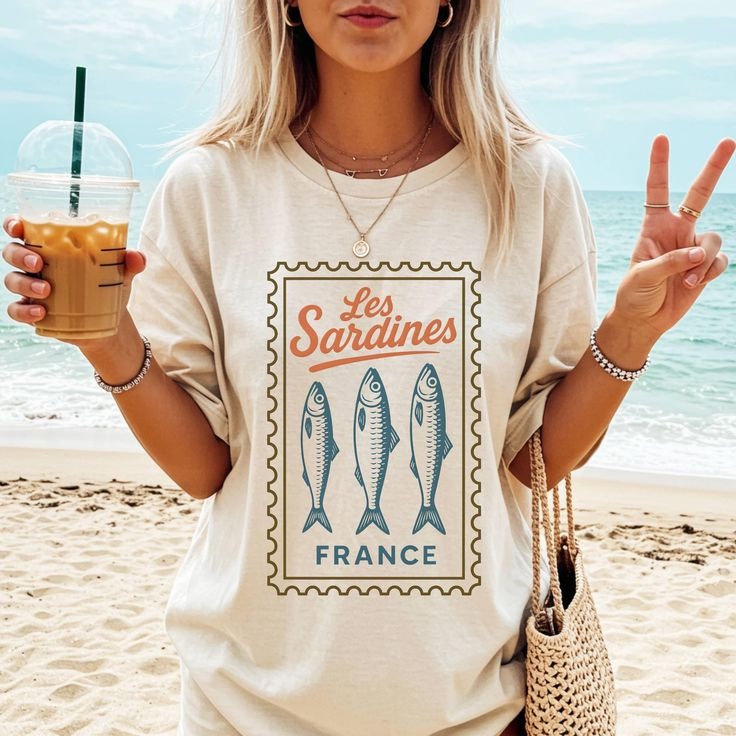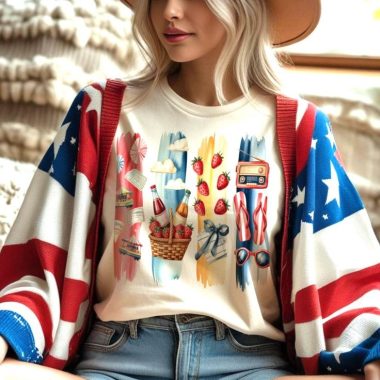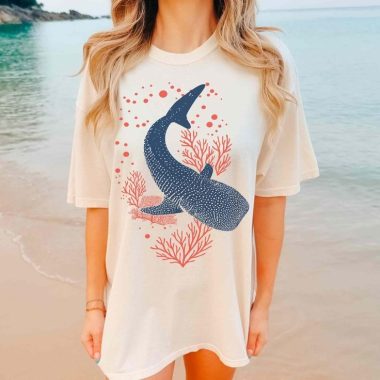Introduction
Fashion unfolds as a grand narrative written across centuries, continents, and cultures. More than mere ornamentation, it is a reflection of human ingenuity, societal values, and technological progress. From hide‑stitched garments that sheltered our prehistoric ancestors to programmable fabrics that will clothe us tomorrow, fashion has continuously reinvented itself. This extensive treatise ventures deep into fashion’s multifaceted journey—tracing its functional origins, cultural symphonies, psychological resonances, industrial metamorphoses, cutting‑edge breakthroughs, ecological awakenings, socio‑political echoes, economic dynamics, digital revolutions, and speculative horizons—while weaving a coherent tapestry that underscores fashion’s boundless capacity to shape and be shaped by the human experience.
The Primal Loom: Clothing as Shelter and Symbol
In the shadowy realms of prehistory, humans fashioned rudimentary coverings from animal pelts, plant fibers, and coarse hides. These early garments fulfilled an urgent need for warmth, protection, and camouflage. Yet alongside their utilitarian purpose, they bore nascent traces of decoration. Scraps of colored mineral pigment, shells, and carved bones threaded as pendants signified group membership or conjured spiritual potency. As small bands transitioned from nomadic foragers to settled villagers, the domestication of flax, hemp, and sheep catalyzed fiber cultivation. Spindles and primitive looms transformed raw materials into woven textiles, each yard of fabric representing a leap in collective skill and cooperation. The earliest textiles carried simple motifs—stripes, checks, and natural dyes—that broadcasted clan identity or social rank. In these formative acts of weaving and dyeing, fashion’s dual role as life‑preserving necessity and medium of expression first entwined.
Threads of Culture: Garments as Living Archives
Across the planet, traditional attire acts as a living repository of collective memory, encoded in color palettes, weave patterns, and embroidery techniques. In the snow‑shrouded highlands of the Himalayas, hand‑woven yak wool cloaks feature intricate geometric borders that narrate mountain deities and seasonal festivals. The lacquer‑resistant ikat ikats of Central Asia trace lineage through selective dyeing processes, where threads are bound and dyed to produce motifs that bridge nomadic heritage and modern reinterpretation. In the tropical islands of Indonesia, batik craftsmen apply wax resist to create layered floral and fauna patterns, each symbol steeped in ancient folklore and regional lore. The tartan plaids of Celtic clans persist as badges of familial pride, their hues once derived from local plants and minerals. Even as contemporary designers refresh silhouettes, these ancestral textiles endure as dynamic art forms—celebrated in museum exhibits, reimagined in runway collections, and worn with pride during cultural ceremonies—ensuring that the threads of tradition remain unbroken.
The Inner Wardrobe: Psychology and the Power of Dress
Every garment we choose becomes a vessel for self‑narrative. Before stepping into the world, the morning ritual of dressing invites an intimate dialogue between internal state and external presentation. A structured blazer, tailored to perfection, can serve as emotional armor—imbuing the wearer with a sense of calm command and strategic clarity. In contrast, flowing, unstructured fabrics invite ease and open‑minded exploration, signaling a willingness to embrace spontaneity. Color theory underscores this semiotic exchange: fiery reds awaken confidence and visibility, while muted grays and neutrals provide a canvas for introspection. Textural nuances also carry symbolic weight—sleek satin evokes luxury and sensuality, coarse denim suggests resilience and practicality. Accessories function as punctuation marks: a boldly sculpted ring may assert individuality, while a softly knotted scarf can echo sentimental attachment. Psychological research into “enclothed cognition” reveals that donning certain clothes can measurably alter self‑perception and cognitive performance. Thus, fashion transcends external adornment to become an active collaborator in shaping thought, mood, and social interaction.
Industrial Currents: From Handcraft to Mass Production
The eighteenth century’s Industrial Revolution unleashed transformative forces upon the world of dress. The advent of water‑powered looms and mechanized spinning frames enabled the flood of textiles from factory mills. The sewing machine accelerated garment assembly, turning what once took hours of meticulous handwork into minutes of mechanical precision. These innovations birthed ready‑to‑wear clothing and democratized access to style once reserved for elites. Department store palaces, their glass facades aglow with mannequins, beckoned consumers into curated worlds of aspiration. Mail‑order catalogs bridged rural isolation, delivering the newest silhouettes to frontier homesteads. Yet this wave of mass production also sowed the seeds of uniformity and disposability. As factories pursued ever‑faster turnover, quality lines blurred and garments cycled through fleeting trends. In parallel, haute couture houses doubled down on bespoke craftsmanship—each garment a testament to artisanal mastery, hand‑stitched linings, and intricate embroidery—preserving fashion’s most elevated artistry even as the world embraced mass‑market models.
Catalysts of Change: Technological Alchemy in Textiles
The twenty‑first century heralds an era of unprecedented fusion between material science and fashion design. Nanotechnology imparts self‑cleaning and water‑repellent properties to everyday garments, reducing laundering frequency and resource consumption. Phase‑change materials regulate microclimates by absorbing and releasing heat in response to temperature shifts, offering adaptive comfort across environments. Bioengineers harness microbial processes to spin cellulose fibers or lab‑cultivate collagen into leather‑like sheets, presenting cruelty‑free, biodegradable alternatives to conventional textiles. Smart garments integrate conductive yarns and microprocessors to monitor biometrics—heart rate variability, glucose levels, posture—and relay data for wellness applications. Three‑dimensional knitting machines translate digital patterns into seamless, custom‑fit garments, minimizing cut‑and‑sew waste. Augmented reality and virtual fitting rooms allow shoppers to “try on” plausible ensembles without physical samples, reducing return rates. Blockchain tracking systems record each thread’s journey, ensuring transparency from seed to storefront. This convergence of science and style is redefining garments as dynamic interfaces—responsive, regenerative, and intimately attuned to both wearer and environment.
The Ethical Imperative: Sustainability and Social Responsibility
Amid growing awareness of fashion’s ecological footprint—water‑intensive cotton monocultures, petrochemical‑derived synthetics, chemically charged dye processes, and oceans of landfill‑bound textiles—a paradigm shift beckons. Sustainable fashion emerges not as a trend but as an ethical ethos. Regenerative farming practices for fiber crops revitalize soil health and sequester carbon. Closed‑loop mills recycle water and capture dye effluent for cyclical reuse. Business models pivot toward circularity: garments are designed for repair, resale, and end‑of‑life repurposing, extending their functional lifecycle. Platforms for clothing rental and peer‑to‑peer exchange foster community and reduce impulse-driven consumption. Transparency initiatives—from QR‑coded labels to third‑party ethical audits—empower consumers to align purchases with values. Simultaneously, fair‑trade cooperatives in garment‑producing regions guarantee living wages, safe workplaces, and the preservation of indigenous crafts. The ethical revolution in fashion challenges designers, manufacturers, and consumers alike to reweave the industry’s supply chains into systems that honor both human dignity and planetary stewardship.
Wearable Protest: Fashion as Socio‑Political Expression
Throughout history, clothing has wielded the power to amplify protest and solidarity. The suffragette movement of the early twentieth century adopted signature colors—white for purity, purple for loyalty, green for hope—to visually unify banners and attire in marches demanding women’s voting rights. During the Civil Rights era, African American communities embraced natural hair and African‑patterned fabrics as acts of reclaiming identity and resisting assimilation. Punk subcultures of the 1970s weaponized DIY aesthetics—safety pins, torn fishnets, jarring graphics—to challenge societal norms and consumerist orthodoxy. In contemporary times, fashion weeks have become platforms for political statements: designers feature castes of diverse body types and gender identities to question beauty standards, runway backdrops project climate‑crisis imagery, and proceeds from capsule collections support social justice causes. Online movements like #MeToo and climate‑activist “Green Carpet Challenges” harness the red carpet as a stage for advocacy. In this nexus, garments transcend decoration to become tangible manifestos, rallying points for collective voices and catalysts for change.
Economic Fabrics: Global Supply Chains and Market Forces
Fashion’s economic ecosystem stretches from cotton fields in Central Asia and cotton belt regions of the American South to garment factories in Southeast Asia, Eastern Europe, and Africa. Luxury epicenters—Paris, Milan, New York, Tokyo—anchor the high‑end market, their heritage houses commanding premium price points through centuries‑old archives and atelier craftsmanship. Meanwhile, fast‑fashion conglomerates leverage real‑time data analytics and agile supply chains to launch micro‑collections aligned with internet‑ignited trends. E‑commerce platforms, from global marketplaces to direct‑to‑consumer startups, dismantle geographic barriers but heighten competition for consumer attention. Geopolitical turbulence, trade tariffs, and climate‑induced supply disruptions motivate brands to diversify sourcing, near‑shore production, and invest in localized micro‑factories. Simultaneously, small‑batch artisans and digital fabricators experiment with on‑demand production, offering bespoke pieces with minimal waste. In this complex interplay, resilience and transparency emerge as competitive advantages, as stakeholders navigate both profit imperatives and ethical responsibilities.
Digital Fabrications: The Metaverse of Style
As virtual realms ascend from gaming platforms to social hangouts, fashion has leapt into the metaverse. Digital wearables—authenticated by non‑fungible tokens—dress avatars in virtual environments, granting status and self‑expression even in pixelated dimensions. Major brands host immersive runway events in virtual cities, allowing global audiences to attend front‑row seats via VR headsets. Augmented reality apps let users layer digital garments over real‑world selfies, crafting hybrid identities that blur the line between physical and virtual. Blockchain ensures the provenance and scarcity of these digital pieces, just as it does for tangible couture. “Phygital” collections straddle both domains: purchase a garment, receive the physical item alongside its digital twin, and unlock exclusive experiences—be it backstage passes, styling consultations, or future digital drops. The metaverse expands fashion’s canvas, inviting infinite creativity while challenging notions of ownership, scarcity, and value.
Toward Tomorrow: Personalized, Predictive, and Planetary Wardrobes
The next epoch of fashion will integrate personalization, prediction, and planetary care into its very fiber. Artificial intelligence stylists will curate wardrobes optimized for individual lifestyles, climates, body metrics, and ethical preferences, dispatching garments precisely when needed and scheduling their return for recycling at end‑of‑life. Biofabrication labs will churn out fibers grown from algae, mycelium, or yeast, creating materials that replenish ecosystems rather than deplete them. Wearable biosensors embedded in garments will monitor health markers—hydration levels, UV exposure, posture—and interface with healthcare platforms for real‑time insights. Distributed micro‑factories, powered by renewable energy, will print and knit customized garments on demand in local communities, reducing transportation emissions and economic leakages. Blockchain governance models may oversee decentralized fashion cooperatives, ensuring equitable profit distribution and transparent decision‑making. In this envisioned future, fashion transcends commerce to become a holistic system that fosters individual well‑being, cultural exchange, and environmental regeneration.
Conclusion
From the flickering fireside drapes of our ancient forebears to the gleaming digital armor of tomorrow’s avatars, fashion remains an enduring testament to humanity’s quest for protection, identity, and beauty. It is a perpetual dialogue between past and future, tradition and innovation, individual and collective. As the world confronts pressing challenges—climate change, social inequity, cultural erosion—fashion stands at a pivotal crossroads. By weaving together sustainable practices, ethical labor, technological ingenuity, and cultural respect, the industry has the power to redefine itself as a force for unity and regeneration. In embracing this vision, each garment—whether spun by hand, printed by machine, or rendered in code—becomes a luminous strand in the infinite canvas of human creativity, ready to shape the stories of generations yet to come




